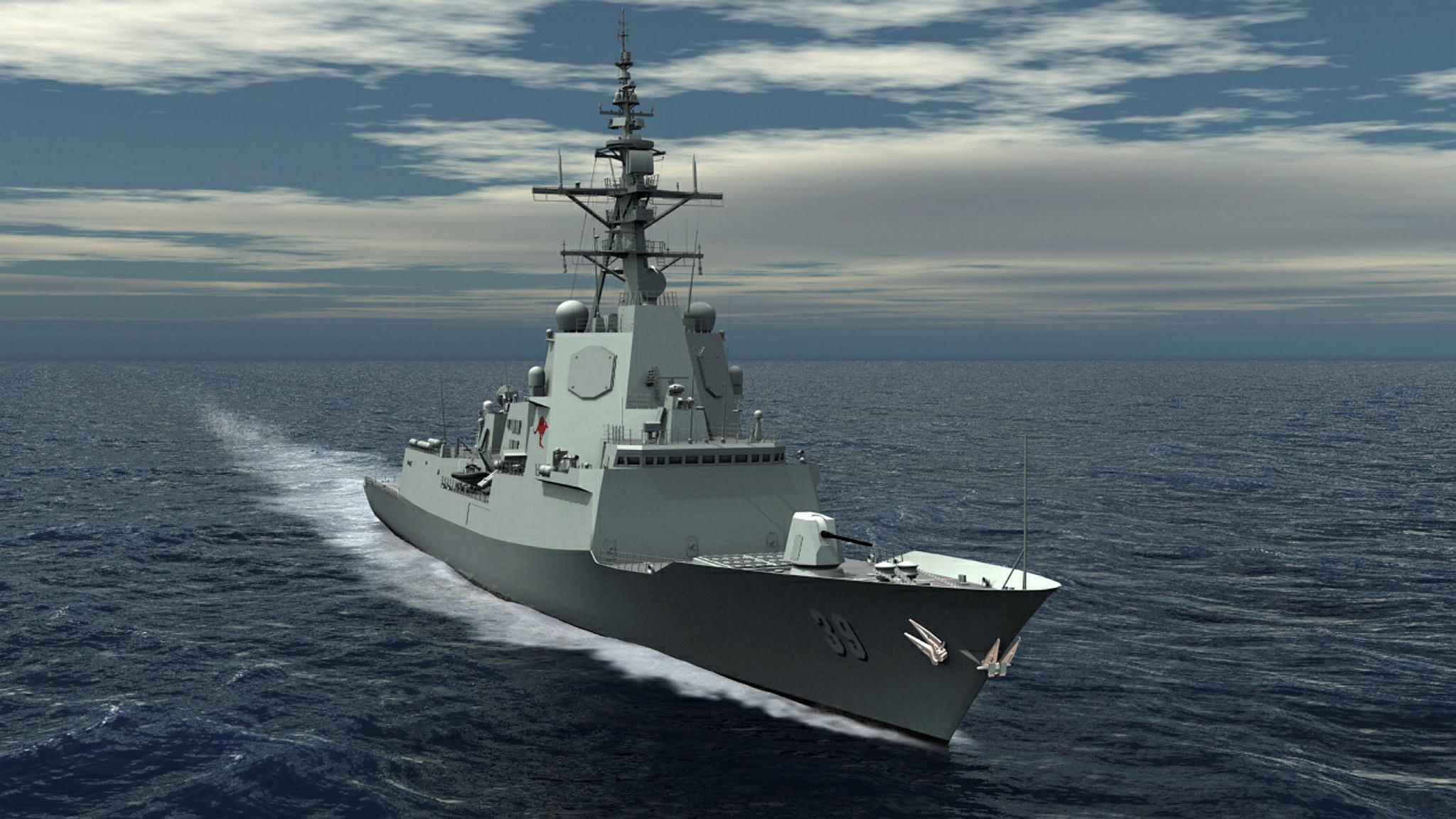
SYDNEY, AUSTRALIA — The consortium building three air warfare destroyers (AWDs) for the Royal Australian Navy has provided an update on the construction of the ships, as well as an overview on the lessons learned from the delays and cost overruns that have plagued the program.
Speaking at a conference on the sidelines of the Pacific 2015 International Maritime Exposition in Sydney, Australia, Rod Equid, chief executive officer of the AWD Alliance, also touted steady progress on the remaining two ships even as the lead ship, HMAS Hobart nears completion.
The ships were ordered as part of Australia’s SEA 4000 program for a new class of AWDs to replace the Royal Australian Navy’s Adelaide-class (Oliver Hazard Perry) frigates and its stopgap air warfare capability with the Raytheon SM-2 surface-to-air missile as part of requirements outlined in the 2000 Australian Defense White Paper.
Australia’s Hobart-class AWDs are based on a Spanish Navantia F100 frigate hull modified to Australian requirements, chief of which is a Lockheed-Martin Aegis combat system. Navantia’s design won selection as the hull-form for the AWD in 2007, despite U.S naval company Gibbs and Cox having previously been considered the favorite with an offer of an evolved design based on scaled-down variant of the Arleigh-Burke Flight II-class design.
The AWD Alliance is a contract arrangement between the Commonwealth of Australia represented by the Capabilities and Sustainment Group (formerly the Defense Matériel Organization) as owner-participant, ASC and Raytheon Australia. Navantia, for its part, declined to be part of the alliance, instead opting to sign a platform system design contract with the Alliance.
Soon after construction on the AWDs began in 2010 with the fabrication of pre-fabricated hull blocks at three widely-distributed locations in Australia, reports began emerging of challenges facing the process. These reportedly were primarily related to workforce inexperience with Equid estimating that 95 percent of the workforce was new hires who needed to be trained in the specialized roles they were working in, but also because of issues with drawings available for the alliance to work with.
These resulted in construction delays from the block subcontractors at an early stage of the construction phase, which were exacerbated by the typical “Ship One” issues and the high level of concurrency, which had the effect delivering changes to production throughout construction. The level of engineering effort was underestimated from the start, with project schedules turning out to be too optimistic.
Overall, it was estimated that the construction schedule for the lead AWD, Hobart, has slipped by approximately 30 months, with Equid confirming that costs had overrun to the tune of $870 million. He also touted improvements as the alliance gains experience from ship to ship, citing a 30 percent improvement in second AWD (Brisbane) over the first, with a further 20 percent improvement seen in the construction in the third ship, Sydney.
The schedule was now more realistic and on plan, with the Hobart now in the water since May 2015 with the ship then 76 percent complete. Hobart will commence sea trials in Sept 2016, with delivery to the RAN scheduled for July 2017. Brisbane is now 68 percent complete and close to achieving the construction milestone of completing hull integration with a planned delivery date of September 2018.
Moving on to lessons learned, Equid cited the age-old points of having a realistic plan that matched the complexity of the undertaking and the need to better manage concurrency of design-design maturity issues. The problems with having a transactional relationship with Navantia, where the Spanish shipyard opted out of the alliance and instead signed a relatively low-value contract providing services was cited, but deemed “unavoidable” by Equid.
A 2014 Australian National Audit Office report explained this situation, saying that “there was limited incentive for Navantia to put its own profit share at risk by entering an alliance agreement with a new shipbuilder, and taking part in a pain-share gain-share regime it imposed on (its) potential profit,” with the result of this was that it detracted the ability of the alliance to collectively and collaboratively manage risk.
A recent plan to advance the schedule for building frigates and offshore patrol vessels under Projects SEA 5000 and SEA 1180 respectively and to emphasize domestic production effectively commits the government to a permanent naval shipbuilding industry in Australia, and would hopefully see the skilled labor issues that bedevilled the early construction stages of the AWD program not be repeated in future Australian naval shipbuilding programs.
However, although that decision was made before Australia’s recent prime ministerial changes, with current Prime Minister Malcolm Turnbull not having committed to the continuous-build plan since taking office in September.





